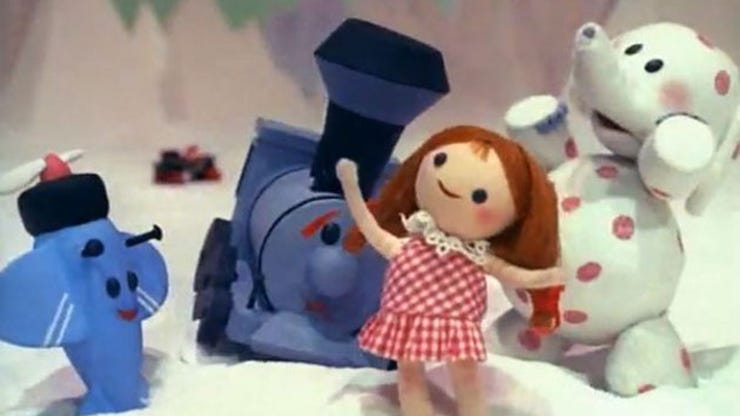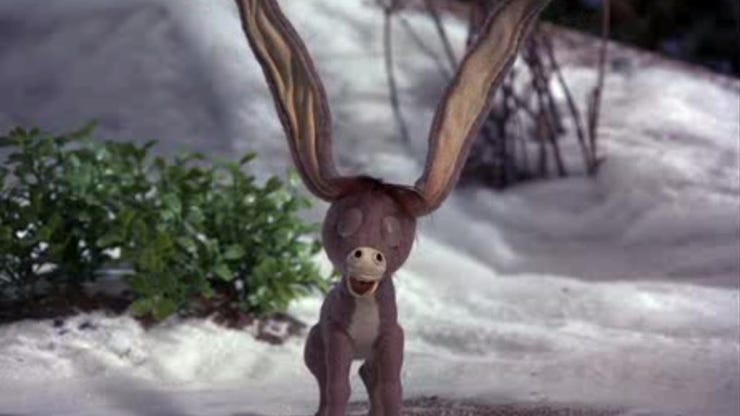Join or Sign In
Sign in to customize your TV listings
By joining TV Guide, you agree to our Terms of Use and acknowledge the data practices in our Privacy Policy.
5 Interesting Facts About Rudolph the Red-Nosed Reindeer You Probably Didn't Know
There's a lot more to the story than you might think
Rudolph the Red-Nosed Reindeer is a Christmas classic and a beloved watch every year at this time of the season. It was the first Christmas special from Rankin/Bass Productions, and perhaps the most beloved of the studio's many peculiar stop-motion Christmas specials like Santa Claus Is Comin' to Town and The Year Without Santa Claus. The story of the young reindeer with the glowing red nose who guides Santa's sleigh has been broadcast every holiday season since it premiered in 1964.
You've seen Rudolph the Red-Nosed Reindeer many times, but there are still probably plenty of things you don't know about the special. Here are some fun facts.

Rudolph the Red-Nosed Reindeer
1. The animation technique is called Animagic, and it was handled by Japanese animators
Rankin/Bass outsourced all of its stop-motion animation to Japanese studios. Rudolph was supervised by stop-motion pioneer Tadahito Mochinaga at MOM Studios in Tokyo. The animation technique was called Animagic, a painstaking process where jointed, wood-and-felt puppets were moved ever-so-slightly for each new frame. It took about 18 months to shoot a half-hour.

Rudolph the Red-Nosed Reindeer
CBS /Landov2. Rudolph the Red-Nosed Reindeer had an unusual journey to the screen
Rudolph was created by Robert L. May, a copywriter for the department store chain Montgomery Ward, which published the story as a promotional booklet in 1939. May's brother-in-law was songwriter Johnny Marks, who wrote the song that became a hit for Gene Autry in 1949 and later wrote "Rockin' Around the Christmas Tree" and "A Holly Jolly Christmas." Marks' neighbor was Arthur Rankin Jr. (of Rankin/Bass), who persuaded Marks to let him make a Rudolph TV special. Screenwriter Romeo Muller's script was based on the song, a format which became a staple of the Rankin/Bass specials, with follow-ups like "Frosty the Snowman" and "The Little Drummer Boy." Muller said that he would have preferred to adapt the book, but he couldn't find a copy.

Rudolph the Red-Nosed Reindeer
3. The puppets eventually showed up on Antiques Roadshow
After production, the Santa and Rudolph puppets were given to a secretary, who didn't keep special care of them. They fell into disrepair and were eventually bought by a collector. In 2006, the collector had the puppets appraised on the PBS series Antiques Roadshow, where they were valued between $8000 and $10,000. They were restored to original condition and are often shown at memorabilia conventions. Most of the other puppets have deteriorated or been lost.

Rudolph the Red-Nosed Reindeer
4. One of the Misfit Toys suffers from depression
On the Island of Misfit Toys, where odd and abandoned toys are exiled to, there's a rag doll named Dolly who seems perfectly normal. Fans wondered for years what made her a misfit, and Arthur Rankin Jr. confirmed in 2007 that Dolly's problem is psychological -- she's depressed because her owner discarded her. Poor Dolly.

Nestor the Long-Eared Christmas Donkey
5. Nestor the Long-Eared Christmas Donkey was a botched attempt to create another Rudolph
In 1977, Rankin/Bass made a weirder-than-usual special based on an unsuccessful Gene Autry Christmas song that used the same formula as Rudolph the Red-Nosed Reindeer: a young ungulate who's ostracized by his peers for his physical quirk until that quirk helps him save Christmas -- in Nestor's case, he protects Mary during a sandstorm by wrapping her in his ears so she and Joseph can safely get to Bethlehem. It's pretty fascinating to watch, because it's like a bizarro-Rudolph where everything is wrong. Nestor is cute, but there are many reasons people aren't singing "Nestor the Long-Eared Christmas Donkey" every holiday season, starting with that unwieldy name.
Rudolph the Red-Nosed Reindeer airs Tuesday, Nov. 27 at 8/7c on CBS.
